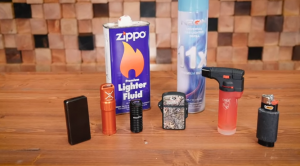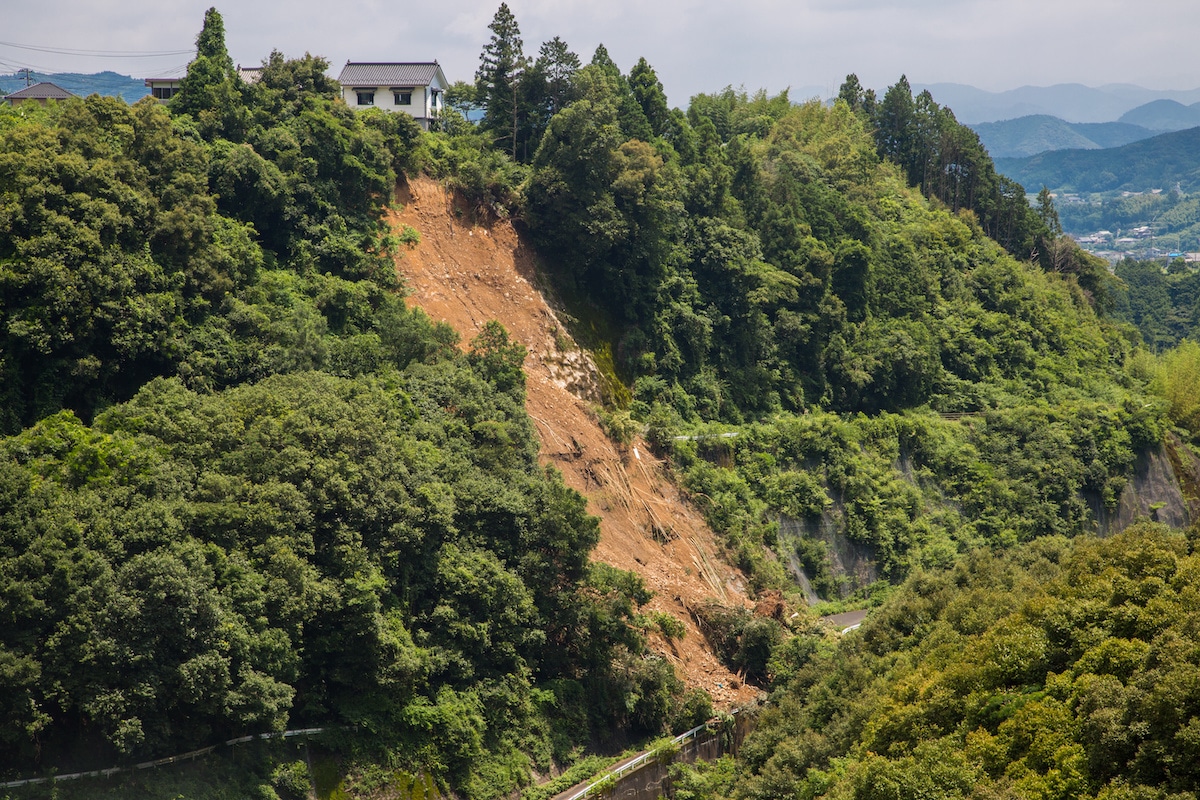Exploring the great outdoors is always great to connect with nature and breathe some fresh air! As an avid camper, hiker, and overall outdoor-lover, I know that connecting with what’s outside can be great for our bodies and minds. But the truth is, just like most things in life, it’s not guaranteed to always roses and butterflies; sometimes things don’t go the way you expect.
What We'll Cover
While you never want to hope for the worst, it is important to be prepared and knowledgeable about how to survive some of the worst-case scenarios that can happen when outdoors. One of these scenarios that you need to be prepared for is getting lost in the wilderness. 42% of hikers who have gotten lost have done so from wandering off the trail. While going off trail is something you should be able to avoid, not all reasons for getting lost are the person’s fault. 17% of these hikers got lost because of bad weather, while 16% became lost after falling off of the trail.
If you get too deep into the woods and discover that you’ve gone too far before you’ve realized it, there are some steps that you’ll want to follow to ensure your survival.
Finding Your Way Out of the Woods
It may seem obvious, but once you’ve realized that you are lost, you want to immediately determine how to find your way out of the wilderness. It isn’t as simple as to just start walking in a particular direction; you’ll have to put a bit more thought and planning into it.
Use the STOP Method
One of the best ways to do this is by using the STOP Method. The STOP Method is easy to remember:
- (S) Stay Calm
- (T) Think
- (O) Observe
- (P) Plan
It’s easy to start feeling panicked once you notice that you don’t know where you are or how to escape. Try to calm yourself down with breathing methods, talking to yourself or the person you are with, and knowing that there is a way out.
Next, think. Think about how long you’ve been traveling, if you’ve made any turns or chosen any forks in the path, and what direction you’ve been heading in.
After that, you’ll want to thoroughly observe. Look at what is around you right now. Notice details down to the types of plants and marks on the trees. Are there any trail markers? Noticing these details will help you in case you happen to circle back to the same place again. From here on out, observe everything that is in your circle of vision. All surroundings are important and tell their own story about where you can be in the woods.
Lastly, you want to plan. Try to create a plan around how you are going to move from here on out. Are you going to backtrack where you’ve come from, or is there another direction that you can tell has sounds, or signs of leading out?
Identify Your Location
Just like one of the steps in the STOP Method, pay extra attention to your location. If you have a compass or map of the area that you’re in, or can bring up your location on your phone, try your best to locate where you are at the moment. If you are in a lush area, try to get to a higher ground if possible for better visibility. Being able to see the full landscape can also give you a better idea of where you can go. Don’t exert too much energy trying to find higher ground, though.
Look for Signs of People
Try to notice any small tell-tale signs that people have been where you are, such as an old campfire, litter, or cut up tree stumps. Besides looking, make sure to continue to listen closely, too. Sound can travel easily, and you want to keep your ears open in case you hear any voices or sounds of civilization close by.
Stick to Open Country
It is best to not go into more lush or condensed spaces. Instead, try to stick to land that is more open as you explore. Usually open country or trails are there because of people creating them, so it is often your best bet that it may lead to a way out. Also, if a plane happens to fly overhead, you have a better chance of them seeing you—just make sure to plan how you are going to signal them if you see one. Something shiny like a mirror or metal object, or brightly colored clothing or accessories can catch the pilot’s attention.
Travel Downhill
It is best to travel downhill rather than uphill, since it is more likely to lead you to a way out. If the area that you are in is particularly hilly, heading downhill is most likely the way to go. You’ll conserve more energy, and you may come across a body of water as you head further down. If you do happen upon a stream or body of water, follow it in the direction that the water is flowing.
What To Do If You’re Lost at Night
Being lost at night adds another layer of uncertainty and stress to getting lost in the wilderness, but not all hope is lost. While you can still attempt to travel more with a flashlight and the right tools, it is best to stay put until dawn comes.
Before it gets too dark, you’ll want to find a good place to take shelter for the night. It’s tougher to find a good spot to hunker down once it’s already dark because of lowered visibility. If the sun starts setting and your daylight is fading away, this is the moment to decide that if you aren’t already close to a way out, you should plan to stay where you are. Pitching a tent or creating a make-shift fort will be much more difficult once darkness takes over.
If you’ve been following water, make sure to be at least 200 feet away from water when you settle in for the night, as nocturnal animals will probably show up to the body of water during the nighttime. Although they may do you no harm, it is best to stay out of their way and far from their gathering territory.
Preparing in Advance for Being Lost
Although no one hopes or plans to get lost, it is always your best bet when in the outdoors to be prepared and expect the unexpected. Even if you go out planning to only go on a hike for a few hours or a short day trip, always wear and bring hiking basics and light overnight gear.
The U.S. Forest Service recommends a list of essentials that every person outdoors should have with them, even if you plan to only be outside for a few hours. These essentials include:
- More than enough water and food than you plan on consuming. You should also be familiar with how to forage for food in case you run out.
- A compass for hiking. Make sure you know how to use the compass ahead of time. Hiking compasses are typically better than normal compasses because they include extra tools for helping you. Note: GPS and a cell phone are not reliable enough, as you most likely will lose service if you find yourself lost in the middle of the wilderness.
- Maps of the area you will be in. Make sure you know the route you plan on going, and see the surrounding areas on the map as well. Also be sure you know how to read your map, as they come in many varieties that have their own quirks.
- Sturdy hiking boots, clothing, and gear. Wear layers so that you are prepared for all climate and possible weather conditions, and bring extra socks in case the ones that you are currently wearing happen to get wet.
- A blanket, flashlight, and matches, all kept in a water-resistant container. These will come in handy if you end up having to spend the night in the woods, so you can build yourself a fire and stay warm overnight.
In addition to these, to round out the “Ten Essentials” as recommended by the National Parks Service, you should also always have with you the below items, too.
- Sun protection, including a hat, sunscreen, and sunglasses.
- Insulation, including a jacket, your hat, gloves, thermal underwear and a rain shell.
- First aid supplies. A travel first aid kit is perfect to bring.
- A repair kit and tools, including a knife, duct tape, screwdriver and scissors. You can also get a pre-assembled survival kit that has these useful items and more.
- Emergency shelter. If you bring a light tent and tarp, you won’t have to worry about creating shelter if you get stuck at night.
You should also check with the local ranger before you head out, so you’re aware of any warnings. Rangers can tell you if there’s any risk of inclement weather, bear or other dangerous animal sightings, road or trail closures, high fire danger, or other possible concerns.
Whether you are traveling alone or with someone else, it is also important to let someone else outside your group know where you are going and how long you plan to be gone for. Depending on your outdoor plan, you may need to give a simple explanation of hiking on a particular trail, or more detailed information such as where you plan to hike to, stop, and camp, if you are going on a longer trip. This way, if you do not return by the time you expected to, someone can be informed in case a search and rescue crew will need to be sent out. Otherwise, it will take longer for others to realize that you are lost.
Gear to Bring to Help Find Your Way to Civilization
There are specific items that you should have on hand that’ll make finding your way out of the wilderness and back to civilization a bit simpler than if you were left to just your intuition and brain alone.
As mentioned earlier, maps and a working compass that you understand how to use are essential. These will be your best bets to finding a way out. Emergency beacons or satellite messengers may also be useful if you spend a lot of time outdoors and know the area you’ll be in has bad cell reception.
Conclusion
Now that you know how to survive and find your way back if you get lost in the wilderness, it is important to not only remember these tips, but to also put them in action by carrying the necessary means of survival. Luckily, it’s been found that 97% of people who go missing in the wilderness are found in the first 24 hours—so don’t lose hope!
Remember the STOP Method, as well as being extra prepared every time you venture outdoors. Be prepared by studying the area you’ll be going ahead of time, and have the proper maps and a compass to help you stay on the right path so that you hopefully won’t even get lost in the first place.
The responses below are not provided, commissioned, reviewed, approved, or otherwise endorsed by any financial entity or advertiser. It is not the advertiser’s responsibility to ensure all posts and/or questions are answered.



![Best Archery Sets This 2023 [Men & Women]](/assets/images/8cf78150f1d9d7a0c175609145d21517.png)

